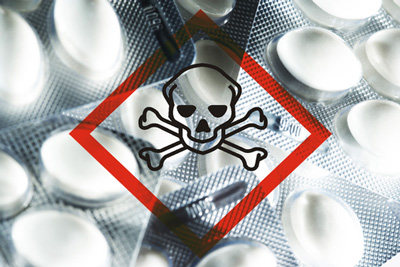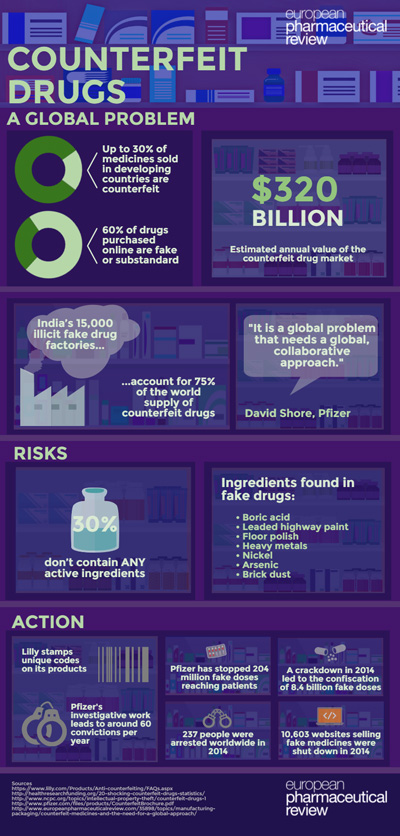The fight against counterfeit medicines
Posted: 25 April 2016 | | No comments yet
New research is providing the foundation to apply criminology theory to preventing the production and sale of counterfeit medicines…


Counterfeit medicines are a global problem. In Niger in 1995, 50,000 people were given fake meningitis vaccines, resulting in 2,500 meningitis related deaths. That same year, nearly 90 children in Haiti and 30 infants in India died due to consuming cough syrup tainted with a toxic chemical found in antifreeze. These are just some examples of the tragedy that can come from the illegal trade in counterfeit drugs.


Until now, in many countries there hasn’t been a standard protocol to conduct investigations and pursue prosecution for counterfeit medicines.
New research, led by Michigan State University (MSU), is providing the foundation to apply criminology theory to preventing the production and sale of fake and substandard medicines.
Some countries currently deploy an approach of rapid intervention and response. However, even if the speed of policing increases, this tactic is not enough to prevent counterfeiting and protect the public, said John Spink, director of the College of Veterinary Medicine’s Food Fraud Initiative.
Working with enforcement agencies in Nigeria, Spink and his team studied protocols for crime scene investigation and forensic science. What they learned is applicable to countries around the world that have experienced cases of fraud.
One key step to stopping instances of fraud, the researchers say, is to define the factors necessary for a crime to occur. This strategy could allow enforcement agencies to anticipate the conditions that create counterfeiting or fraud opportunities.
Crime triangle theory
The MSU researchers say an additional tool is the application of the crime triangle theory. For fraud to work, there has to be a victim, a criminal and a crime opportunity due to the absence of capable criminal enforcement. The space within the sides is the magnitude of the crime opportunity.
“It’s important to understand the different types of counterfeits, counterfeiters and counterfeiting organisations before selecting effective countermeasures,” said Spink, whose team included MSU’s College of Human Medicine’s Dr Douglas Moyer and Dr Michael Rip. “The goal is to reduce the size of the triangle; increasing the understanding of how and why fraudsters circumvent laws, audits and certifications helps achieve that goal.”
In the Nigerian case study, Spink found that the country’s efforts had been successful. Between 2000 and 2004, Nigeria reduced counterfeit medicines in its pharmaceuticals market from over 65 percent to 16 percent. Nigeria’s effort to fight this criminal activity remains strong, however, the nation is still at risk because counterfeit and substandard medicines still are widely distributed. It’s an arms war between enforcement and fraudsters.
“Let’s be clear, though, launching or refinement in countermeasures or detection processes will be met with fraudsters’ own countermeasures,” he said. “An anti-counterfeit strategy should be dynamic and not be perceived as leading to ultimately fixing something. Preventing counterfeiting is more akin to managing a chronic disease such as diabetes rather than the one-time fix of an acute incident such as a broken leg.”
Along with applying criminal theory to thwart the problem, Spink and his team also studied the effect of some practical measures. They showed that field product authentication efforts, regulating the supply chain, consumer awareness initiatives and more can be effective tools in fighting counterfeit medicines.
You can find out more about counterfeit drugs in our infographic:




